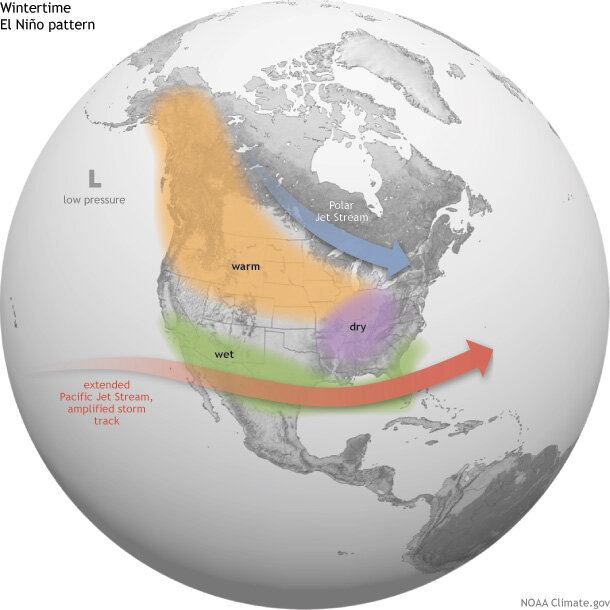NOAA issues El Niño watch: Here’s where and when we will feel the impact
(NEXSTAR) – Move aside La Niña – it’s almost time for El Niño to take over.
National Oceanic and Atmospheric Administration’s Climate Prediction Center issued an “El Niño watch” Thursday morning, saying the climate pattern is expected to form sooner than previously anticipated.
After La Niña ended last month, we entered “ENSO-neutral” conditions, which means neither La Niña nor El Niño is present. Those neutral conditions were expected to end at some point in the summer or early fall.
But as of Thursday, it looks as though the timeline has moved up. Forecasters said there is a 62% chance El Niño will take over between May and July. The probability that El Niño will form by fall is even higher, between 80% and 90%.
What would that mean for our weather? We usually feel the strongest effects of El Niño as we get closer to winter.
An El Niño fall and winter would be the inverse of what we’ve seen the last three years. It would likely mean a cold, wet winter for the Southern U.S. A strong El Niño in particular is associated with lots of rain for the Southwest and California – though California already saw a cold, wet winter this year even without El Niño in control.
El Niño usually means a warm, dry winter for the Pacific Northwest, Ohio Valley, northern Rockies and parts of the Midwest. Hawaii also often sees below-average rain during an El Niño fall, winter and spring season.
While El Niño can strengthen hurricane season in the central and eastern Pacific, it tends to contribute to weaker hurricanes forming in the Atlantic basin.

Even a strong El Niño isn’t a guarantee those exact scenarios will play out, NOAA warns.
“‘Associated with’ doesn’t mean that all of these impacts happen during every El Niño episode. However, they happen more often during El Niño than you’d expect by chance, and many of them have occurred during many El Niño events,” the agency writes.
NOAA issues an “El Niño watch” when El Niño is possible within the next six months, explained Michelle L’Heureux, a meteorologist with the Climate Prediction Center.
Whether we’re in a La Niña year, El Niño year, or neither is determined by sea surface temperatures near the equator over the Pacific Ocean. The temperature of the water and air above it can shift the position of the jet stream, which impacts the types of weather we see on land.
Copyright 2023 Nexstar Media Inc. All rights reserved. This material may not be published, broadcast, rewritten, or redistributed. Regular the hill posts








